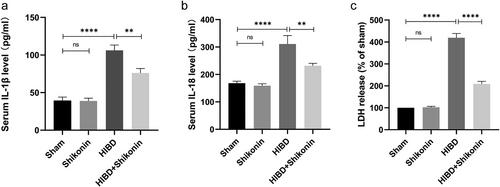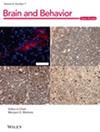The Activation of PKM2 Induces Pyroptosis in Hippocampal Neurons via the NLRP3/Caspase-1/GSDMD Pathway in Neonatal Rats With Hypoxic-Ischemic Brain Injury
Abstract
Introduction
The presence of hypoxic-ischemic brain damage (HIBD) in neonates triggers a strong neuroinflammatory reaction. Pyroptosis, a programmed cell death mechanism associated with inflammation, plays a crucial role in HIBD. Pyruvate kinase M2 (PKM2) plays a significant role in connecting metabolic processes and inflammatory responses, but whether it affects hippocampus pyroptosis in HIBD is unclear. The aim of this study is to elucidate the role of PKM2 in HIBD and to propose a novel therapeutic approach for neonatal ischemic-hypoxic encephalopathy.
Methods
In this study, we employed neonatal 7-day-old Sprague Dawley rats to establish a model of HIBD using the Rice–Vannucci surgical technique and a hypoxia device. To inhibit the elevation of PKM2, we utilized the PKM2 inhibitor shikonin. The rats were categorized into four groups: Sham, Shikonin, HIBD, and Shikonin + HIBD. Behavioral tests, hematoxylin eosin staining, immunofluorescence staining, ELISA (IL-1β, IL-18), and LDH were conducted in each group to evaluate neurological function, hippocampal damage, the occurrence of neuronal pyroptosis, and the neuroinflammation. Western blot was used to assess the expression levels of PKM2, NLRP3, Caspase-1, Cleaved Caspase-1, GSDMD, GSDMDN, and IL-1β.
Results
The expression of PKM2 elevated in hippocampal tissues of the HIBD model and the localization of PKM2 in the hippocampus was activated in neurons instead of microglia during the HIBD. Meanwhile, the inhibition of PKM2 improved the behavioral test scores and the body weight of rats, the neuronal damage in the CA1 region of hippocampal tissue was also attenuated. In addition, inhibiting PKM2 alleviated neuronal pyroptosis by decreasing the expression of PKM2, NLRP3, Caspase-1, Cleaved Caspase-1, GSDMD, GSDMDN. Furthermore, serum levels of LDH and inflammatory factors IL-1β and IL-18 decrease with PKM2 inhibition.
Conclusions
Based on these findings, we can conclude that PKM2 plays a crucial role in regulating hippocampal neuronal pyroptosis of HIBD rats via NLRP3/Caspase-1/GSDMD pathway. Therefore, inhibiting PKM2 could be a promising therapeutic strategy for the treatment of neonatal ischemic-hypoxic encephalopathy.


 求助内容:
求助内容: 应助结果提醒方式:
应助结果提醒方式:


